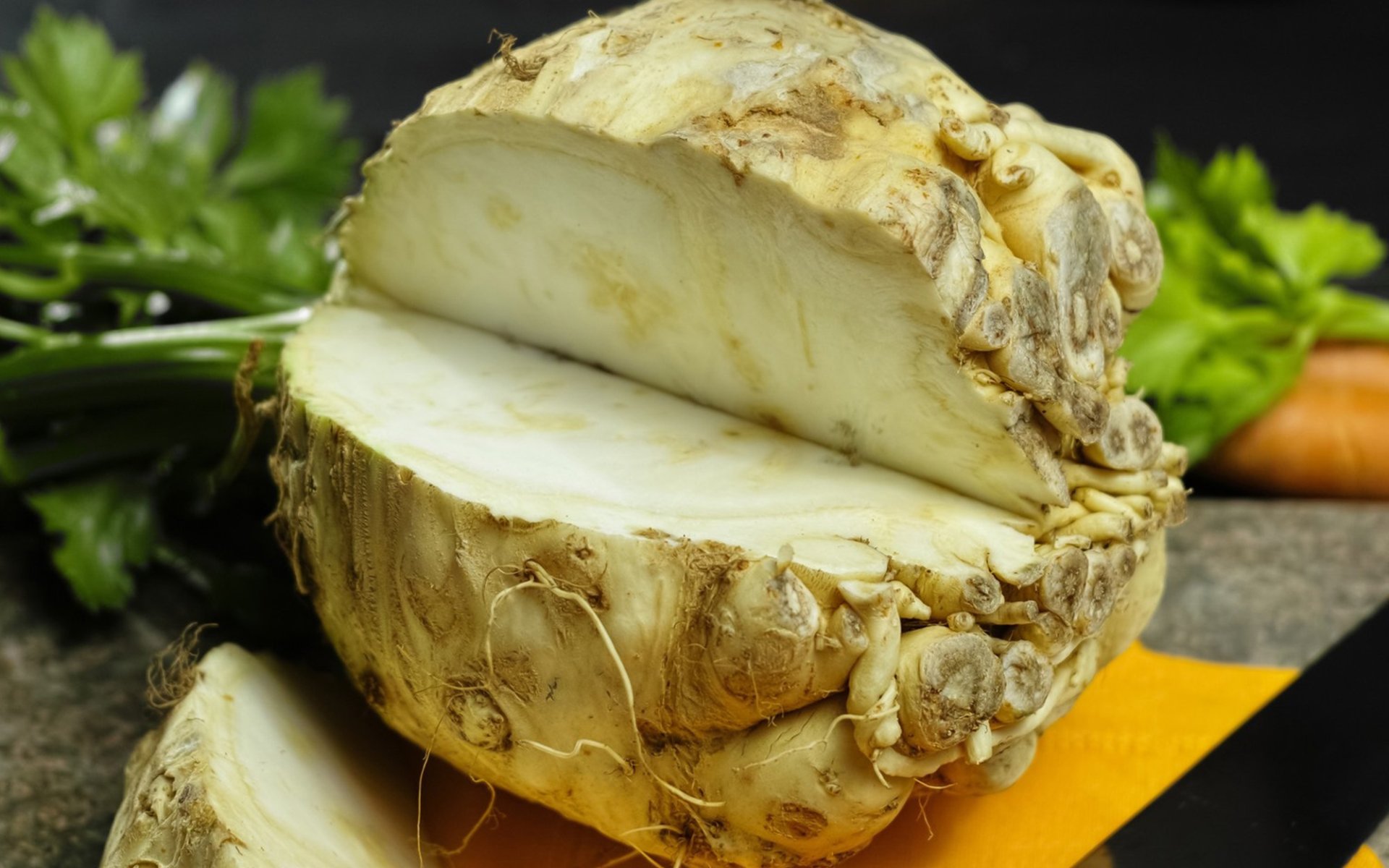Celeriac Root

Many of you have probably heard this phrase often when encountering unusual vegetables. This is because these vegetables have frightening appearances that might lead you to believe they aren't edible. So, please don't jump to conclusions before tasting them, because in reality, these vegetables might be incredibly delicious and packed with more benefits than we could imagine. Today, Rimping would like to introduce Celeriac root, another unique vegetable that is definitely worth trying.
Celeriac: The "Vegetable World's Ugly Duckling" Hiding Inner Delights
Celeriac root, also known as Celery Root, is often likened to The vegetable world's ugly duckling due to its rough, bumpy, and not-so-appetizing exterior. However, many who have tasted this unusual vegetable agree that it is both delicious and highly nutritious.
The History of Celeriac: From Ancient Medicine to European Delicacy
Celeriac is one of the oldest root vegetables recorded in history, originating in the Mediterranean basin. It was cultivated by the ancient Egyptians, Greeks, and Romans for medicinal purposes, treating various ailments from digestive problems to respiratory issues. Homer, the legendary Greek poet, even mentioned Celeriac in his epic poem The Odyssey, dating back to 800 BCE. This serves as important evidence that Celeriac is a much older vegetable than many might think.
Over time, Celeriac began to gain popularity among the European aristocracy. It was first documented as a culinary ingredient in France during the 17th century, after the French chef Francois Massialot included a Celeriac soup recipe in his cookbook Le Cuisinier Royal et Bourgeois, published in 1712. This recipe helped popularize Celeriac root as a cooking ingredient, and the vegetable soon became a staple in French cuisine.
Later, in the 19th century, Celeriac was introduced to the United States, eventually becoming a popular ingredient in American cuisine. Americans often used it as a substitute for potatoes in certain recipes.
Culinary Uses and Health Benefits: Versatile Dishes and Wellness
Today, Celeriac remains a popular ingredient in various dishes. It can be stir-fried, mashed, boiled, or fried. It can also be eaten raw. It has a taste similar to celery but is sweeter. In France, a classic and famous dish is celeri remoulade, a healthy salad.
Beyond its culinary uses, Celeriac offers numerous health benefits. It is rich in Vitamin C and Vitamin K, as well as potassium and phosphorus. Additionally, it is a good source of dietary fiber, which can help promote digestive health.


